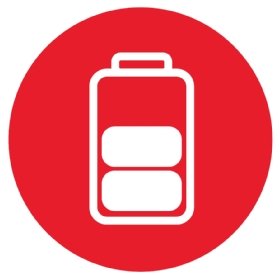ampere hour (Ah or amp hour)
What is an ampere hour (Ah or amp hour)?
Ampere hours -- sometimes abbreviated as Ah or amp hours -- is the amount of energy charge in a battery that enables 1 ampere of current to flow for one hour. Another way of saying it is that 1 Ah is the rating indicating how much amperage a battery can provide for one hour. The unit is a useful metric to determine the capacity of an energy storage device, such as a rechargeable battery or deep-cycle battery.
Large batteries are usually rated in ampere hours. But, for standard AA and AAA batteries and other small batteries used in devices such as personal vaporizers and notebook computers, the rating is provided in milliampere hours (mAh).
Determining a battery's amp hour rating
An ampere is the rate of electron flow or current in an electrical conductor. One ampere of current represents 1 coulomb of electrical charge moving past a specific point in one second.
An ampere hour combines the amount of current with the time taken for a battery to completely discharge. A simple way to look at it is: 1 ampere of current flowing for one hour. During the hour, the amount of charge transferred in is 3,600 coulombs (ampere-seconds).
Mathematically, Ah is represented as the following:
Amp hour (Ah) = Current (I) x Discharge time (T)
The calculation involved in determining the ampere hour rating can be understood with the following example -- consider a battery that pulls 30 amps (A), which is discharged in 30 minutes:
Current = 30 A
Discharge time = 30 mins (0.5 hours)
Ampere hour = 30 x 0.5 or 15 Ah for 1 hour
The following is another example:
Current = 15 A
Discharge time = 5 hours
Ampere hour = 15 x 5 or 75 Ah for 5 hours
The ampere hour rating is displayed on the battery. If the rating is not specified, it usually means that the battery is a starting battery that's not designed to provide continuous power in ampere hours.
Common Ah ratings
The accepted ampere hour rating time period for solar electric batteries, deep-cycle batteries and backup power systems -- uninterruptable power supplies -- is generally a 20-hour rate. The rating indicates that the battery is discharged to 10.5 volts over 20 hours, while the total ampere hours supplied is measured.
Rechargeable lithium-ion batteries are rated at 3,200 mAh, meaning they can discharge 3,200 milliamps (3.2 A) in one hour. Starting batteries are usually rated at 10 hours since they are used faster.
For industrial batteries, a six-hour rate is often specified since it is the typical daily duty cycle. For some batteries, a 100-hour ampere hour rate is specified. It helps to calculate the battery capacity for long-term backup ampere hour requirements. Car batteries are usually rated at 70 Ah.
Manufacturers define the ampere hour rating of lead-acid batteries -- like automotive batteries -- by draining them down to 0% battery capacity over a specific time period. The level of amperage it takes to get the battery to zero over that time is the ampere hour rating.
Milliampere hour
One mAh is 1,000th of 1 Ah. Like ampere hours, milliampere hours also refer to how much current a battery discharges over a period of one hour and indicate how long the battery will continue to operate before needing recharging. A higher milliampere hour value usually indicates either a long battery runtime or a higher storage capacity -- or both. Of course, a higher milliamphere hour rating is more about longer runtime rather than higher speed.
Ampere hour
In deep-cycle batteries, the ampere hour rating is usually specified as multiple C ratings. The C rating refers to how many ampere hours the battery can provide for a particular time period. So, if a battery is rated at 5C, it could provide 26.8 Ah over five hours without discharging. It could also provide 72 Ah over 100 hours. A comparison of different amphere hours for different C ratings can be a useful exercise to determine a battery's capacity, depending on various use cases.

Usually, the faster a battery is used, the more its ampere hour rating declines. This gives rise to Peukert's law, which happens when batteries drain more quickly and thus have less available amperage. Frequent draining affects battery life. When batteries are rapidly discharged, they produce a lot of heat, which leads to power loss and negatively affects their efficiency. Rapidly discharging a battery with a 5C ampere hour rating provides fewer amp hours, whereas a 100C-rated battery discharges more slowly and is, therefore, more efficient.
Ampere hour meter for electroplating systems
In addition to measuring battery capacity, ampere hours are also used for electrochemical systems, like electroplating devices. With those devices, plating thickness is directly proportional to the integration of current over a specified period of time.
A preset ampere hour rating ensures uniform plating thickness and uniformity in quality, both of which are critical requirements for precision electroplating applications, such as gold, silver and platinum. In electroplating, an ampere hour meter is used to measure the ampere hour rating and ensure output quality and reliability, plus minimal material wastage.
See also: battery life, battery memory effect, battery management system, charge cycles, lithium polymer battery, and state of charge.
